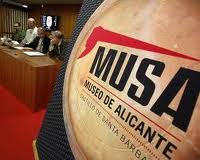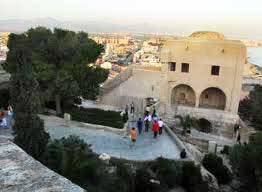Alicante Archeological Museum
If you are pondering studying Spanish in Alicante l and are looking for cultural activities in the city, we recommend this and other Alicante museums.
To find out about more cultural activities, restaurants and history of the city, check out this Alicante travel guide!
Alicante Archeological Museum - MUSA

Where: Plaza Dr. Gómez Ulla, s/n. 03013 Alicante
Opening hours: the opening hours change constantly, please contact the museum at +34 965 149 006 to find out more
Opened in 2000, the Alicante Archeological Museum is lodged in the old San Juan de Dios Hospital (built in the mid 1920s) and it hosts more than 81,000 pieces which illustrate the rich history of the Costa Blanca and the legacy left by the different civilizations that have lived in the Mediterranean.
The Alicante Archeological Museum believes in the renovation of the traditional exhibition system, understood as properly classified and catalogued discoveries. The museum was conceived and conceptualized as being the first archeological museum of the 21st century. Consequently, it was created with modern aesthetics and uses audiovisual and computer and didactic technologies.
- Pre-historic room: the first evidence of human occupation in the territory of Alicante dates back to the medium Paleolithic, some 10,000 years ago. The museum's collection begins around this time and this section runs up to the 8th century BC, when the indigenous people established relations with the Phoenicians from which the Iberian civilization sprung. The large time range which the Pre-historic room illustrates exhibits more than one thousand pieces distributed around three topics: hunters and gatherers, farmers and shepherds, first metalworkers.
- Iberian Culture Room: the tour of the exhibition begins by chronologically and geographically locating the Iberian culture. Alicante was inhabited, according to chroniclers of the time, by the Contestano civilization. An interactive application explains the great richness of archeological sites. The room also features topics such as settlement, economic and social aspects and crafts, religion and funerary rites and Iberians and Rome.
- Roman Culture Room: this exhibition is dedicated to the Roman world in Alicante and it's divided into three sections: Romanization, Roman culture during the Empire and Christianity and the late Roman world. In these room synchronized audiovisual material about daily life in the Roman city of Lucentum (known today as Tossal de Manises) are projected in two 18-meter screens.
- Middle Ages Room: the co-existence of several peoples, with different religions (Islam, Christian and Judaic) and opposing models through 800 years. The exhibition contributes with a very real vision of the Middle Ages, distanced from the typical conception of it as being 'dark times' – on the contrary, archeological remains show how closely these regions were incorporated to the development process of medieval Europe
- Modern and Contemporary Room: spans a period of four centuries, from the 1500s to 1931. The exhibition is structured around two main sections. The first one is subdivided into two topics which are simultaneously illustrated: the Power of the Crown (1500-1808) and the Constitutional Regime (1808-1874). The second section, from the Monarchy to the Republic, begins in 1874 with the monarchic restoration and ends with the proclamation of the II Spanish Republic.




